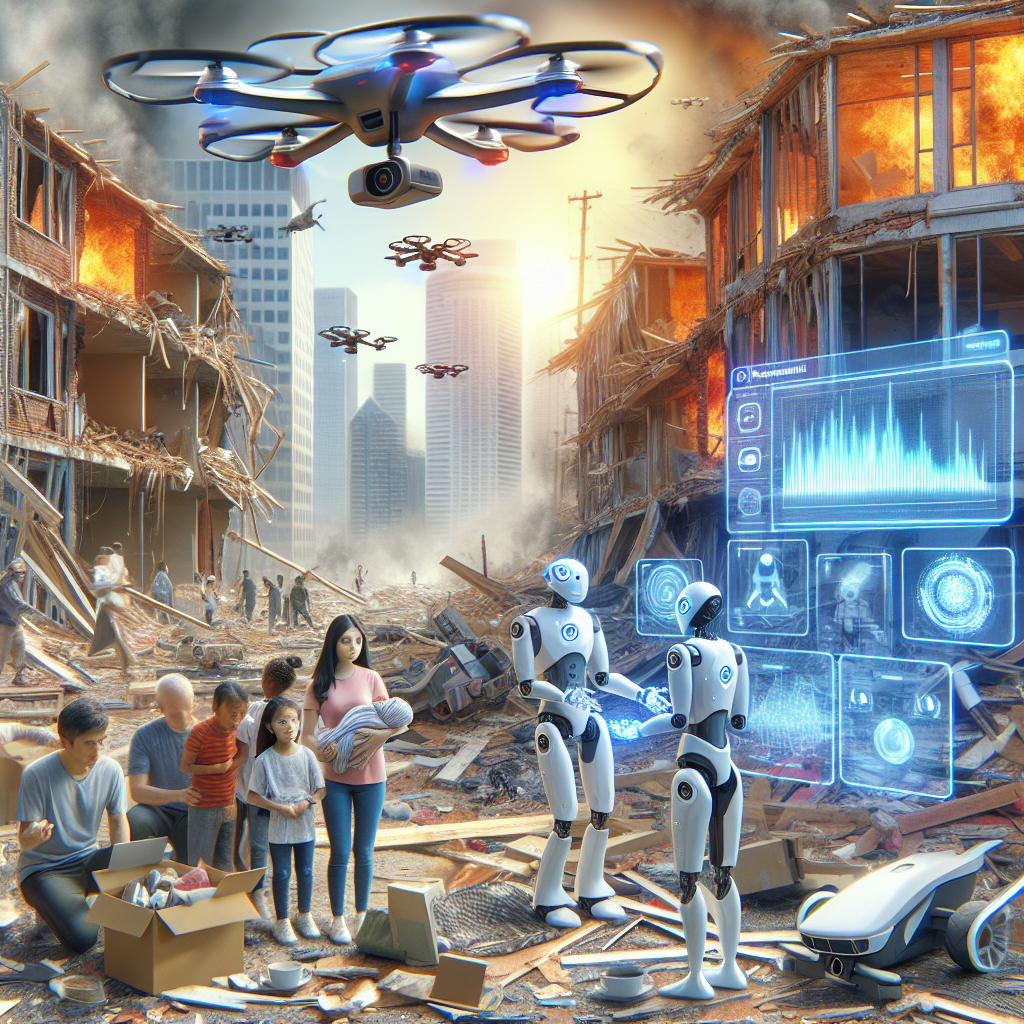In today’s fast-paced world, natural disasters and emergencies are becoming more common occurrences. From hurricanes and earthquakes to cyber attacks and pandemics, organizations around the globe are constantly at risk of facing a crisis that could disrupt their operations and put their business at risk. In such situations, having a robust disaster recovery plan in place is crucial to ensure business continuity and minimize the impact of the disaster.
Traditionally, disaster recovery plans have relied on manual processes and human intervention to respond to emergencies. However, with the advancements in technology, Artificial Intelligence (AI) solutions are now playing a key role in enhancing disaster recovery efforts. AI has the ability to analyze vast amounts of data in real-time, identify patterns and trends, and make decisions faster and more accurately than humans. This makes AI an invaluable tool for organizations looking to improve their disaster recovery capabilities.
There are several ways in which AI solutions can enhance disaster recovery efforts:
1. Predictive Analytics: AI can analyze historical data and patterns to predict when and where a disaster might occur. By using machine learning algorithms, AI can provide organizations with early warnings and recommendations to help them prepare and respond to emergencies more effectively.
2. Automated Response: In the event of a disaster, AI can automate response actions based on predefined rules and algorithms. This can help organizations to quickly assess the situation, prioritize tasks, and allocate resources more efficiently.
3. Real-time Monitoring: AI-powered sensors and devices can monitor critical infrastructure and systems in real-time, providing organizations with up-to-date information about the status of their assets. This can help organizations to identify potential issues before they escalate into a full-blown disaster.
4. Decision Support: AI can assist decision-makers in making informed choices during a crisis by providing them with relevant data, insights, and recommendations. This can help organizations to make faster and more accurate decisions, leading to better outcomes in times of emergency.
5. Communication and Coordination: AI-powered chatbots and virtual assistants can facilitate communication and coordination among team members during a disaster. These tools can help to streamline information sharing, task assignment, and decision-making processes, ensuring that everyone is on the same page and working towards a common goal.
Overall, AI solutions can significantly enhance disaster recovery efforts by enabling organizations to predict, automate, monitor, support decision-making, and facilitate communication during emergencies. By incorporating AI into their disaster recovery plans, organizations can improve their resilience, reduce downtime, and protect their assets and reputation in the face of adversity.
FAQs:
Q: How can organizations integrate AI solutions into their disaster recovery plans?
A: Organizations can start by assessing their current disaster recovery capabilities and identifying areas where AI can add value. They can then work with AI vendors or consultants to develop and implement AI-powered solutions that meet their specific needs and requirements.
Q: What are some common challenges organizations may face when implementing AI solutions for disaster recovery?
A: Some common challenges include data quality and availability, integration with existing systems, privacy and security concerns, and resistance to change from employees. It is important for organizations to address these challenges proactively and involve all stakeholders in the implementation process.
Q: How can organizations measure the effectiveness of AI solutions in enhancing their disaster recovery efforts?
A: Organizations can measure the effectiveness of AI solutions by tracking key performance indicators such as response time, downtime reduction, cost savings, and customer satisfaction. They can also conduct regular audits and reviews to assess the impact of AI on their disaster recovery plans and make necessary adjustments as needed.
Q: Are AI solutions a cost-effective investment for disaster recovery?
A: While the initial investment in AI solutions may be significant, the long-term benefits of improved resilience, reduced downtime, and better decision-making can outweigh the costs. Organizations should conduct a cost-benefit analysis to determine the ROI of implementing AI solutions for disaster recovery.
In conclusion, AI solutions have the potential to revolutionize disaster recovery efforts by providing organizations with advanced capabilities to predict, automate, monitor, support decision-making, and facilitate communication during emergencies. By leveraging the power of AI, organizations can enhance their resilience, minimize the impact of disasters, and ensure business continuity in the face of adversity. It is essential for organizations to embrace AI as a key component of their disaster recovery plans and stay ahead of the curve in today’s rapidly changing and unpredictable business environment.

